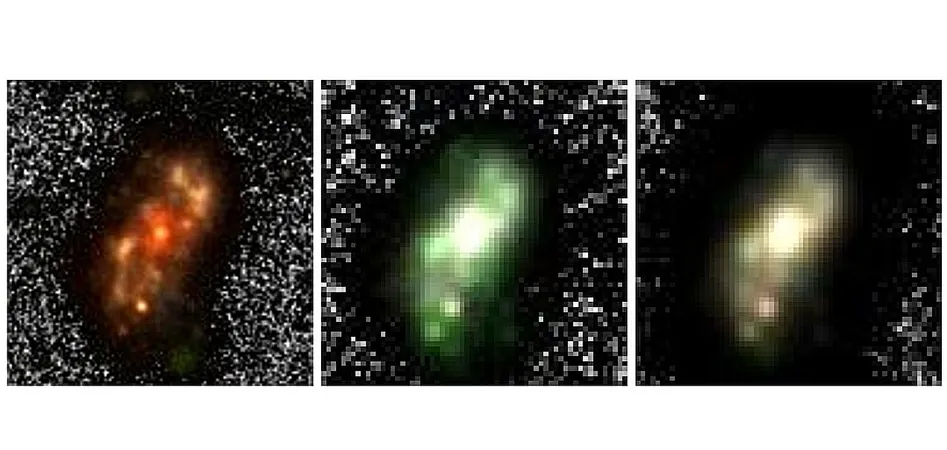
Groundbreaking Discovery: JWST Reveals Massive Spiral Galaxy from the Dawn of the Universe
2024-12-16
Author: Noah
Introduction
In a spectacular revelation, Indian astronomers have identified a remarkable new grand-design spiral galaxy using the James Webb Space Telescope (JWST). Designated A2744-GDSp-z4, this newly discovered galaxy is not just notable for its size and mass; it also provides crucial insights into the evolution of galaxies in the early universe. This groundbreaking finding was detailed in a research paper published on December 6, on the pre-print server arXiv.
Characteristics of Grand-Design Spiral Galaxies
Grand-design spiral galaxies are distinguished by their striking, well-defined spiral arms that extend outward from a bright core. These arms are believed to represent regions of higher density in the galactic disk, which can ignite star formation as surrounding materials become compressed.
Significance of the Discovery
One of the lingering mysteries in astrophysics has been the timeline and formation processes of spiral galaxies in the early universe. Such galaxies are seldom found at high redshifts, and only a handful of individual spirals have been documented with redshifts greater than 3.0. Therefore, the discovery of A2744-GDSp-z4, at a redshift of 4.03, is significant, revealing that this galaxy dates back to a time when the universe was approximately 1.5 billion years old.
Research Team and Findings
Led by astronomer Rashi Jain from the National Center for Radio Astrophysics in India, the research team reported that they discovered a two-armed grand-design spiral galaxy within the Abell 2744 cluster. Their findings illuminate the galaxy's rare structure and striking features, including a prominent central bulge and an extended disk measuring around 32,000 light-years in diameter.
Mass and Star Formation Rate
The stellar mass of A2744-GDSp-z4 is estimated to be approximately 14 billion solar masses, with an astonishing star formation rate of 57.6 solar masses annually. Interestingly, this galaxy's mass-weighted age appears to be about 228 million years, suggesting a rapid assembly of its mass.
Formation Timeline
The formation of stars in A2744-GDSp-z4 most likely began around 839 million years post-Big Bang, allowing it to accumulate a staggering 10 billion solar masses in just a matter of a few hundred million years. This is particularly fascinating, given that the universe's age at the galaxy's redshift was only about 1.5 billion years.
Challenging Existing Models
The results of this study challenge existing hierarchical models of galaxy formation, prompting profound questions about the processes that lead to such rapid growth and development in galaxies. "How did A2744-GDSp-z4 acquire such a large disk in such a short time? How and when did the grand-design spiral arms emerge?" the scientists pondered. Future investigations using the JWST’s NIRSpec IFU capabilities could provide answers to these tantalizing questions.
Conclusion
This groundbreaking discovery not only sheds light on the characteristics of early galaxies but also raises important inquiries regarding the fundamental processes of galaxy formation in the cosmos. As astronomers continue to explore these enigmatic structures, we are reminded just how dynamic and complex the universe's history truly is. Stay tuned for further revelations as we delve deeper into the mysteries hidden in the vastness of space!









 Brasil (PT)
Brasil (PT)
 Canada (EN)
Canada (EN)
 Chile (ES)
Chile (ES)
 España (ES)
España (ES)
 France (FR)
France (FR)
 Hong Kong (EN)
Hong Kong (EN)
 Italia (IT)
Italia (IT)
 日本 (JA)
日本 (JA)
 Magyarország (HU)
Magyarország (HU)
 Norge (NO)
Norge (NO)
 Polska (PL)
Polska (PL)
 Schweiz (DE)
Schweiz (DE)
 Singapore (EN)
Singapore (EN)
 Sverige (SV)
Sverige (SV)
 Suomi (FI)
Suomi (FI)
 Türkiye (TR)
Türkiye (TR)